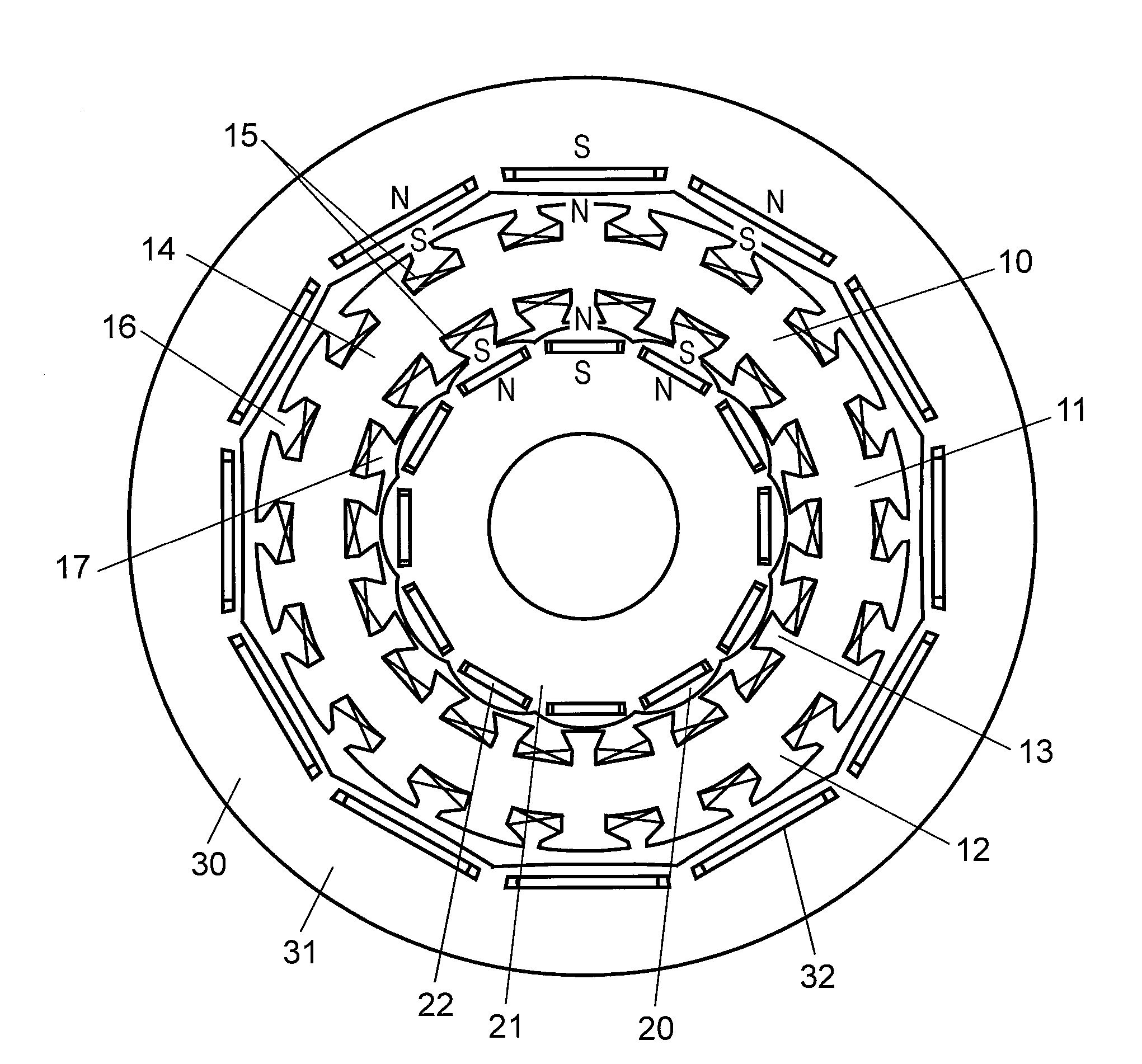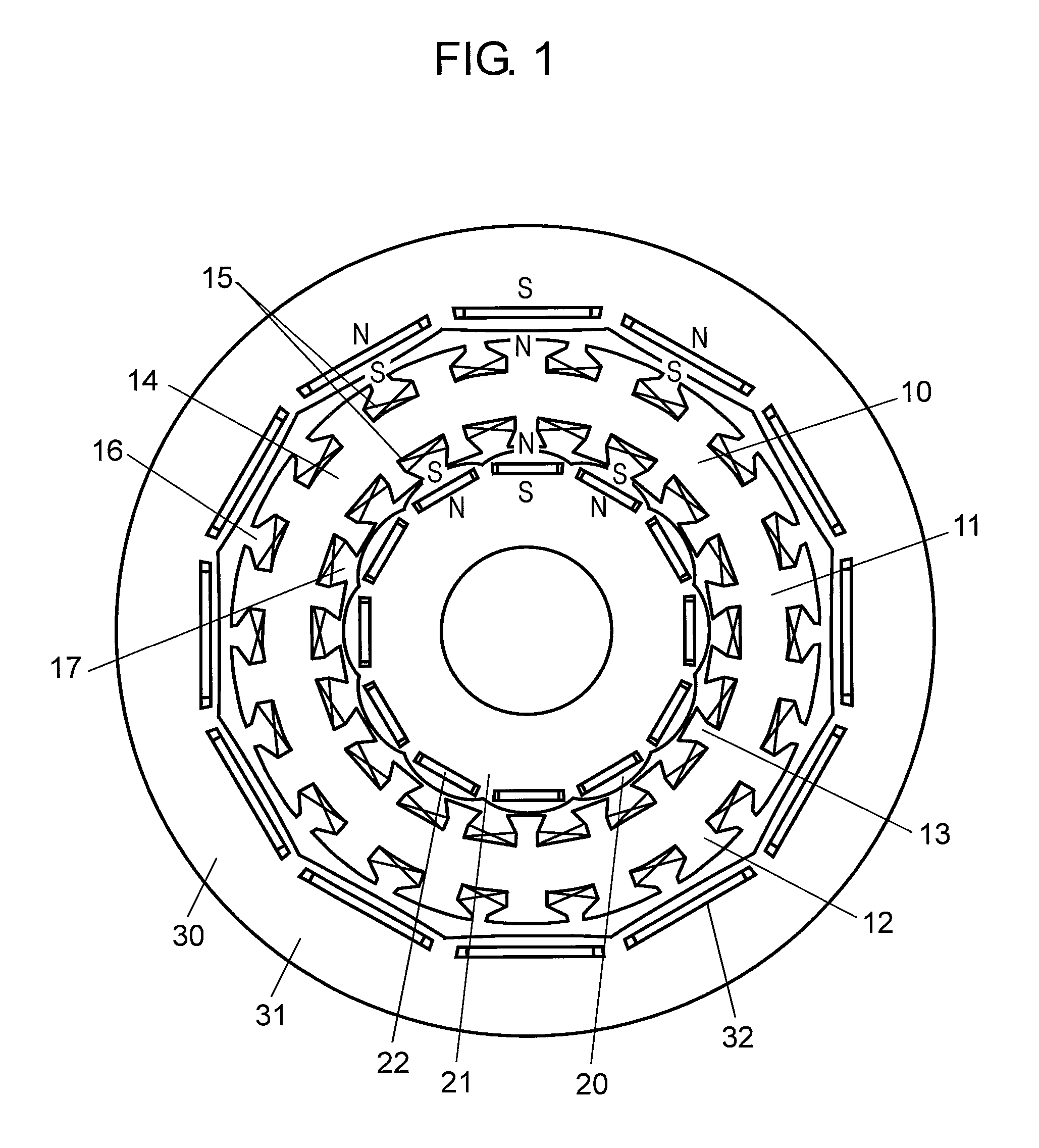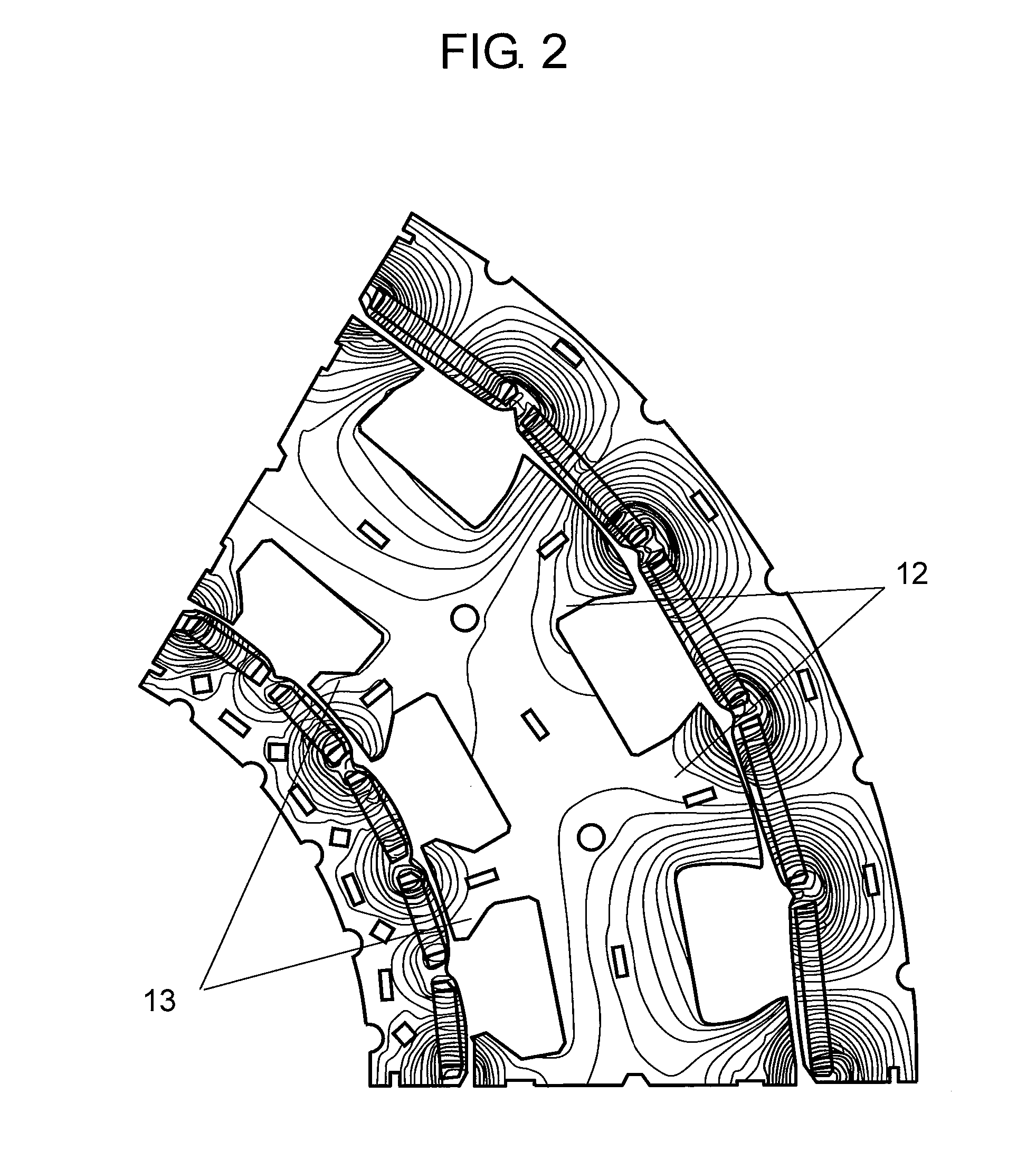Motor
a motor and motor technology, applied in the field of motors, can solve the problems of reducing the efficiency of the motor, increasing the cost of the motor, and the machine is therefore not good for frequent changes, so as to achieve the effect of widening the high rpm range, and reducing the cost of the motor
- Summary
- Abstract
- Description
- Claims
- Application Information
AI Technical Summary
Benefits of technology
Problems solved by technology
Method used
Image
Examples
Embodiment Construction
[0021]An exemplary embodiment of the present invention is demonstrated hereinafter with reference to the accompanying drawings.
[0022]FIG. 1 shows a dual rotor motor in accordance with the embodiment of the present invention, and magnetic poles of an outer rotor have the same polarity as that of opposing magnetic poles of an inner rotor. FIG. 2 shows flows of magnetic fluxes of the dual rotor motor shown in FIG. 1. FIG. 3 shows a dual rotor motor in accordance with the embodiment of the present invention, and magnetic poles of an outer rotor have different polarity from that of opposing magnetic poles of an inner rotor. FIG. 4 shows flows of magnetic fluxes of the dual rotor motor shown in FIG. 3.
[0023]As shown in FIG. 1, the dual rotor motor in accordance with the embodiment includes stator 10, inner rotor 20, and outer rotor 30. Inner rotor 20 forms an interior-magnet type rotor in which permanent magnets 22 are approx. equidistantly placed along the outer circumference of inner-ro...
PUM
 Login to View More
Login to View More Abstract
Description
Claims
Application Information
 Login to View More
Login to View More - R&D
- Intellectual Property
- Life Sciences
- Materials
- Tech Scout
- Unparalleled Data Quality
- Higher Quality Content
- 60% Fewer Hallucinations
Browse by: Latest US Patents, China's latest patents, Technical Efficacy Thesaurus, Application Domain, Technology Topic, Popular Technical Reports.
© 2025 PatSnap. All rights reserved.Legal|Privacy policy|Modern Slavery Act Transparency Statement|Sitemap|About US| Contact US: help@patsnap.com



